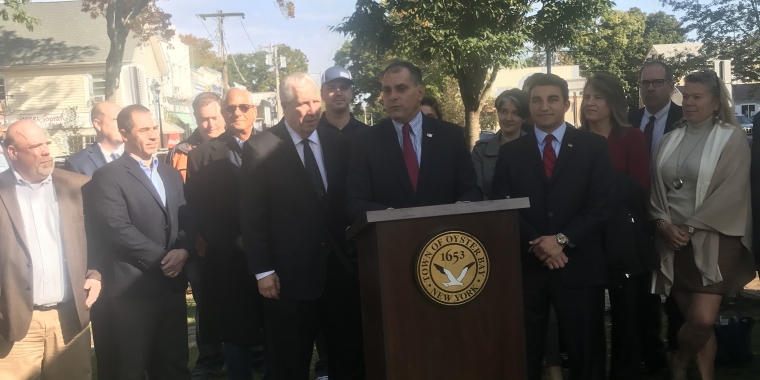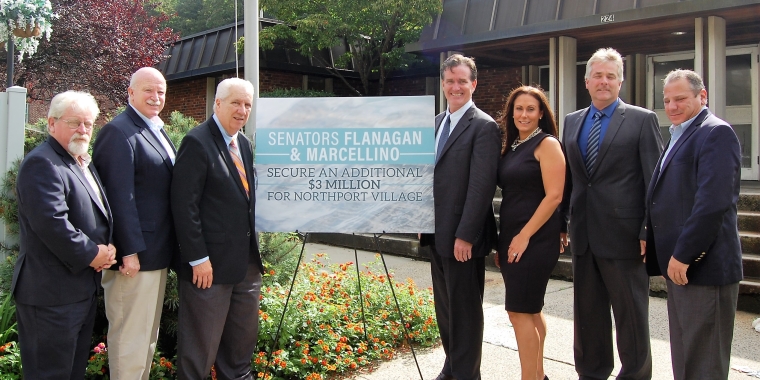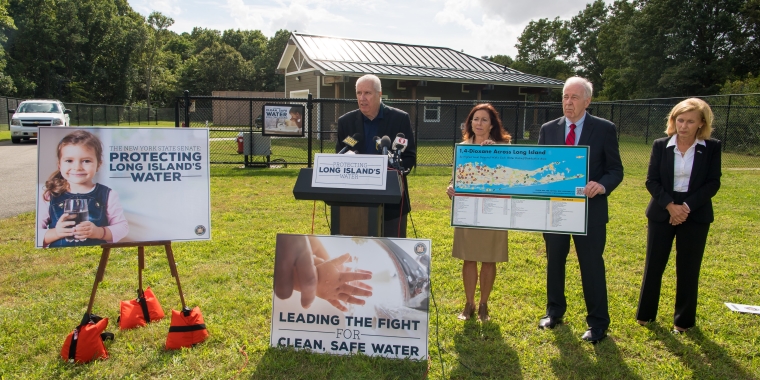
Marcellino And Paterson Announce Agreement On Brownfield Reform
Senator Carl L. Marcellino today announced an agreement to reform the state’s Brownfield Cleanup Program to better target incentives for the cleanup and redevelopment of contaminated sites.
“This legislation is an important step forward for improving both our environment and our economy,” said Governor Paterson. “If properly targeted, these tax incentives have the potential to turn Brownfields into economic engines, particularly upstate. This agreement balances the need to both cleanup sites and spur development with the need to provide fiscal controls and prevent situations where developers received unintended windfalls.”
Senator Marcellino, Chair of the Senate Environmental Conservation Committee, said: “New York State has always been a national leader in the environmental protection arena and we proved that in 2003 when we created a landmark program for the voluntary cleanup of Brownfield sites. That program began the process of removing contamination all across the State. Compromise is the only way to accomplish anything in the legislative game. While this bill does not contain everything I would like, it is positive step towards advancing our common goal of promoting the physical, economic and social revitalization of our communities.”
Assemblyman Robert Sweeny, Chair of the Assembly Environmental Conservation Committee, said: “This significant legislation will lead to the cleanup of thousands of contaminated properties across New York. It will encourage new investment and redevelopment that will invigorate local economies. The program changes will help Brownfields be an attractive development alternative to an undisturbed green field and this will encourage smart growth, revitalize blighted areas and help protect our environment.”
The legislation agreed to today will:
· In some cases, will provide more than double the current tax incentives for site cleanup, up to 50 percent of cleanup costs.
· Limit redevelopment credits for non-manufacturing projects to $35 million or 3 times the cost of site cleanup, whichever is less.
· Limit redevelopment credits for manufacturing projects to $45 million or six times the cost of site remediation, whichever is less.
· Streamlines administration of the Brownfield Opportunity Area Program.
Project applications that have been received prior to July 1, 2007 and applications that have been approved by the Department of Environmental Conservation (DEC) as of the date of the enactment of the legislation will continue to be eligible for current law tax credits.
The current program has not achieved desired redevelopment in struggling areas, and has provided large windfalls for some projects that were not meeting the state's goals of assuring environmental cleanup while spurring economic development. That situation has caused Governor Paterson and the Legislature to pass a moratorium on the Brownfield Cleanup Program, preventing the state from accepting or rejecting any more proposed projects. That moratorium ends July 23; the legislative session is slated to end June 23.
Assemblyman Robert Sweeny, Chair of the Assembly Environmental Conservation Committee, said: “This significant legislation will lead to the cleanup of thousands of contaminated properties across New York. It will encourage new investment and redevelopment that will invigorate local economies. The program changes will help Brownfields be an attractive development alternative to an undisturbed green field and this will encourage smart growth, revitalize blighted areas and help protect our environment.”
DEC Commissioner Pete Grannis said: “So far, not enough cleanup money has found its way into the urban core of our cities, where thousands of Brownfield sites perpetuate blight, create public health risks and discourage needed investment. This agreement reforms the Brownfield cleanup program to make it smarter, more effective and more accountable to taxpayers.”
###



